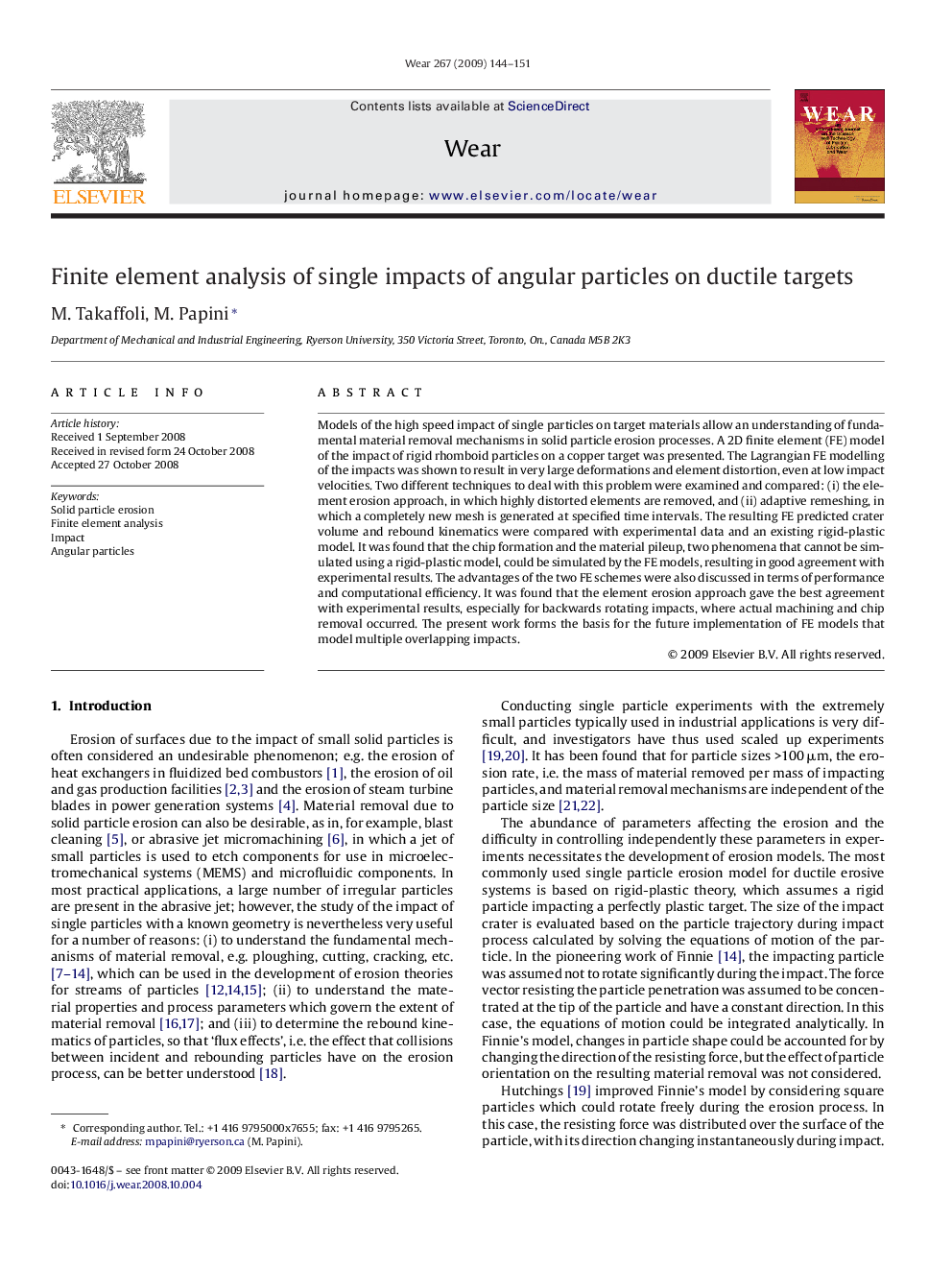| Article ID | Journal | Published Year | Pages | File Type |
|---|---|---|---|---|
| 618715 | Wear | 2009 | 8 Pages |
Models of the high speed impact of single particles on target materials allow an understanding of fundamental material removal mechanisms in solid particle erosion processes. A 2D finite element (FE) model of the impact of rigid rhomboid particles on a copper target was presented. The Lagrangian FE modelling of the impacts was shown to result in very large deformations and element distortion, even at low impact velocities. Two different techniques to deal with this problem were examined and compared: (i) the element erosion approach, in which highly distorted elements are removed, and (ii) adaptive remeshing, in which a completely new mesh is generated at specified time intervals. The resulting FE predicted crater volume and rebound kinematics were compared with experimental data and an existing rigid-plastic model. It was found that the chip formation and the material pileup, two phenomena that cannot be simulated using a rigid-plastic model, could be simulated by the FE models, resulting in good agreement with experimental results. The advantages of the two FE schemes were also discussed in terms of performance and computational efficiency. It was found that the element erosion approach gave the best agreement with experimental results, especially for backwards rotating impacts, where actual machining and chip removal occurred. The present work forms the basis for the future implementation of FE models that model multiple overlapping impacts.
